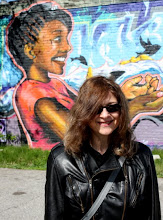
Blindness
Portuguese author José Saramago was reluctant to grant film rights to his 1995 novel about an epidemic of “white blindness” that strikes citizens of an unnamed country. Saramago worried about how the novel’s violence, rape and degradation would be treated by the wrong filmmaker. The well-regarded Brazilian director Fernando Meiralles (City of God, The Constant Gardener) won the rights, on the condition that he set the film in an unrecognizable city (it was filmed primarily in São Paolo). Some of the author’s fears, alas, were justified: Meiralles’ film is a technically accomplished but empty and often excruciating experience.
Meiralles and screenwriter Don McKellar changed the setting from the 1930s or ’40s to a contemporary period but retained its cast of allegorically named characters: Doctor (Mark Ruffalo), Doctor’s Wife (Julianne Moore, who is excellent), Man with Black Eye Patch (Danny Glover), Bartender/King of Ward 3 (Gael García Bernal), Woman with Dark Glasses (Alice Braga).
The first section, in which the mysterious malady strikes First Blind Man (Yusuke Iseya) while he is driving, is the most compelling; we sympathize with the man’s panic and are shocked when he is robbed by Thief (screenwriter McKellar), who has offered to help him. Here Meiralles’ virtuosity is abundantly on display, with brilliant mirror-image compositions and other impressive stylistic touches.
First Blind Man seeks the help of Doctor, an ophthalmologist, who is stumped but soon succumbs to the blindness, a highly contagious condition. Doctor and other newly blind people are ordered into a quarantine camp; Doctor’s Wife, who still has her sight, accompanies her husband into the dismal facility, where concentration-camp cruelty, filth, chaos and moral degradation reign.
The setting resembles a Hieronymous Bosch painting of hell rendered photographically. Meiralles has taken a fantastical story and rendered it in a gritty, realistic style, and the result is often unbearable. A lengthy scene of sexual violence, trimmed by the director after test-audience members walked out, is still a torment. The movie’s final section shows the liberated victims making their way through the devastated city, but the movie (unlike the book, perhaps) never makes clear what the blindness is meant to symbolize or what the parable means, aside from the inhumanity of man toward his fellows. In the end, the characters’ suffering (and by extension the audience’s) feels unjustified and unredeemed by any larger meaning.

No comments:
Post a Comment